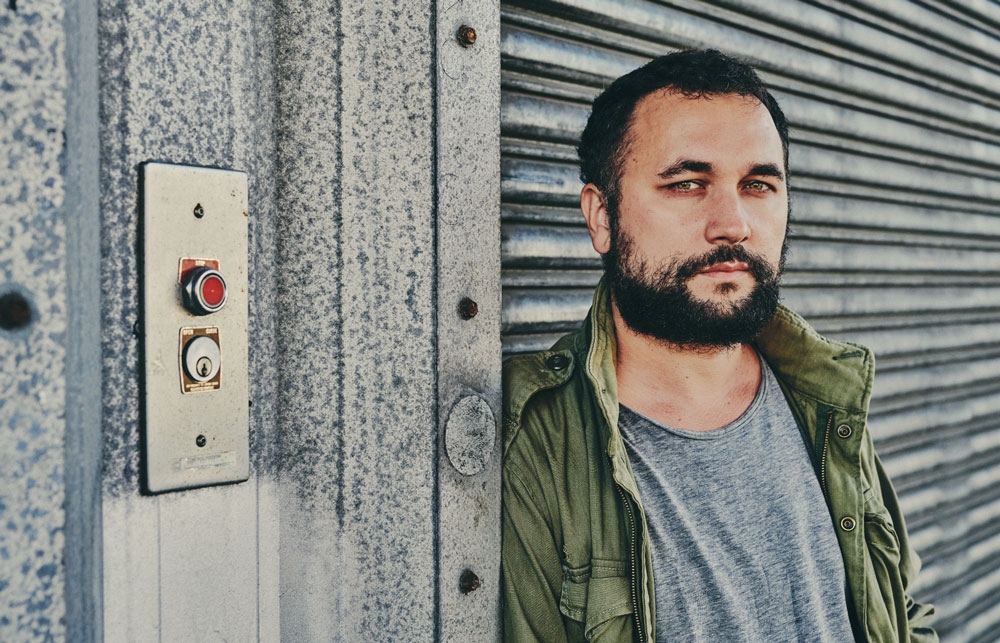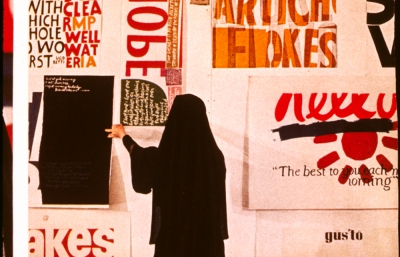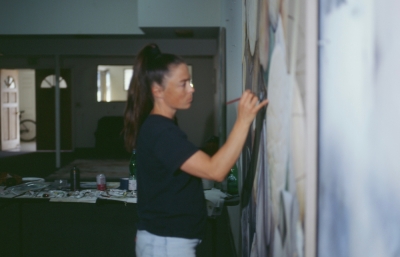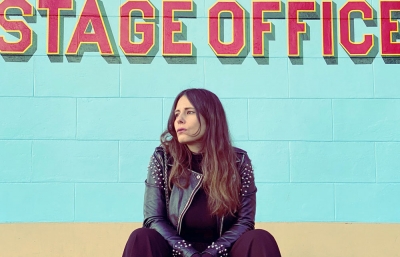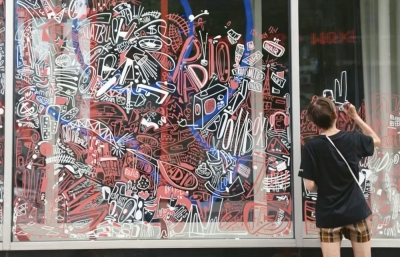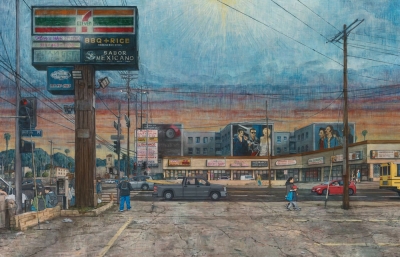So you picked Central Park instead of Christ!
Haha! And the irony is there, just calling your painting Central Park is really funny.
It is. I mean, it's like, "Yeah, this is exactly what it is," which is really hard for people to confront. Would you say your work is funny?
Yeah, I think so. I think I always come from a place of humor. Everything that I start doing is triggered by humor or something that I think is interesting or funny. I think even if I would do something charitable, I would do it from a place of humor. Even if I would do the most heartbreaking things in the world, I think I would approach it with humor because that would be the thing that would get me out of my bed to go even do it, so I need that.
I love humor, I don't know. For me, all my paintings have humor, even in the way I paint. And I think nostalgia is humor. I think the way the trees are painted is humor, the angles are humor, and the little people are humor.
Who do you think is a really misunderstood artist that you really like?
I think there's this guy, Ralph Fasanella. I don’t think he's well-known, but I think he's one of the best American artists.
You stumped me! I was thinking of someone who might have had humor in their work that was missed.
Van Gogh. I think he was the best. I think people missed the point with him. He's so, I don't know, you forget how good he is because they blow him up so much because he's actually better on a smaller scale. I don't know who exactly else with the humor thing, but I think there's more humor in art and everything that is created than we think.
Walk me through something. You go out at night, you're out and you're going for inspiration or you're going to go back to the studio with some ideas. Are you taking photos or are you just mentally taking it in?
Yeah, taking photos, and making sketches. I sit on the bench and draw. I go out and take pictures of my friends or sketch them. Sometimes I'm like, "Oh my God, this was the best night, I have to paint it!" Or I have an idea, as in the painting of the projects I did recently, I walk by there every day and I'm like, "This place needed a painting."









